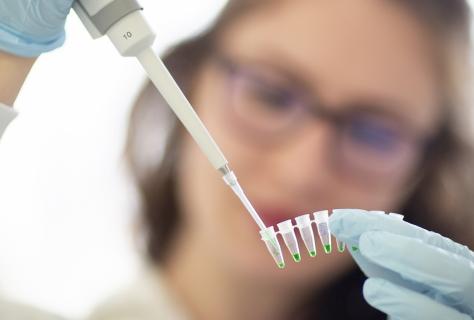Published on 30.01.2020
Research Acceleration
Cytomegalovirus is a virus of the herpes family that is extremely widespread, as in some countries almost 100% of adolescents are infected. It is transmitted through saliva, blood, tears, semen, etc. Fortunately, it is relatively harmless for healthy people: it usually goes unnoticed and at worst causes symptoms similar to mononucleosis, i.e. fever, fatigue, muscle pain, etc.
On the other hand, in children and adults with hereditary or acquired immune deficiencies, such as HIV infection or immunosuppression in the context of organ transplants, deficiencies affecting T-cell function, cytomegalovirus infection can lead to more serious effects such as pneumonia, hepatitis, esophagitis, gastroenteritis, retinitis or encephalitis. These patients are also vulnerable to many other infectious diseases.
When a cytomegalovirus infection becomes aggressiv
Consequently, the death of a healthy person in his fifties, without the slightest history of immune deficiency, following a recent infection with cytomegalovirus is surprising. "The few isolated cases of death or severe CMV infection are unexplained," says Jean-Laurent Casanova, a professor at the University of Paris/Necker Hospital for Sick Children (AP-HP) and at Rockefeller University in New York, and director of an Inserm research laboratory at the Imagine Institute and the Howard Hughes Medical Institute in New York. "Epidemiological data are patchy, but by extrapolation, we estimate that one in 1 million people could develop a severe isolated CMV infection."
Why such a dramatic consequence in some people? Immunologist and pediatrician Jean-Laurent Casanova has been arguing for many years for the idea that a genetic cause could explain why some individuals develop severe, even fatal, clinical forms of the disease after a benign infection in others. "We were able to study the DNA of a 51-year-old Iranian man who died 29 months after contracting the virus, in whom we presumed the existence of a genetic mutation that altered the effectiveness of the immune system," explains the physician-researcher.
The complete sequencing of the coding parts of the genome did indeed reveal an alteration in the NOS2 gene, without any mutation affecting genes associated with an immune deficiency having been discovered in this man. Although the protein produced by the NOS2 gene has already been described as being involved in inflammatory responses and cell defense, its full functions have not yet been fully deciphered. The protein synthesized by the NOS2 gene contributes to the production of "NO", nitric oxide, in an inducible way. It is a protein discovered by Carl Nathan in New York and very well characterized in mice, but its function in humans remained enigmatic. In humans, NOS2 seems to play an important role in the activation of the immune system against CMV infections," concludes Jean-Laurent Casanova. On the other hand, since the deceased man was previously exposed to other infections, its involvement seems redundant with respect to other infectious agents." The novelty and importance of this work is therefore found both on the CMV and NO sides.
With this discovery, Jean-Laurent Casanova's team demonstrates once again the importance of the genetic "terrain" in the evolution of infections. As with influenza, tuberculosis and herpes, a genetic susceptibility favors the development of aggressive, even fatal, forms of disease following a cytomegalovirus infection.





